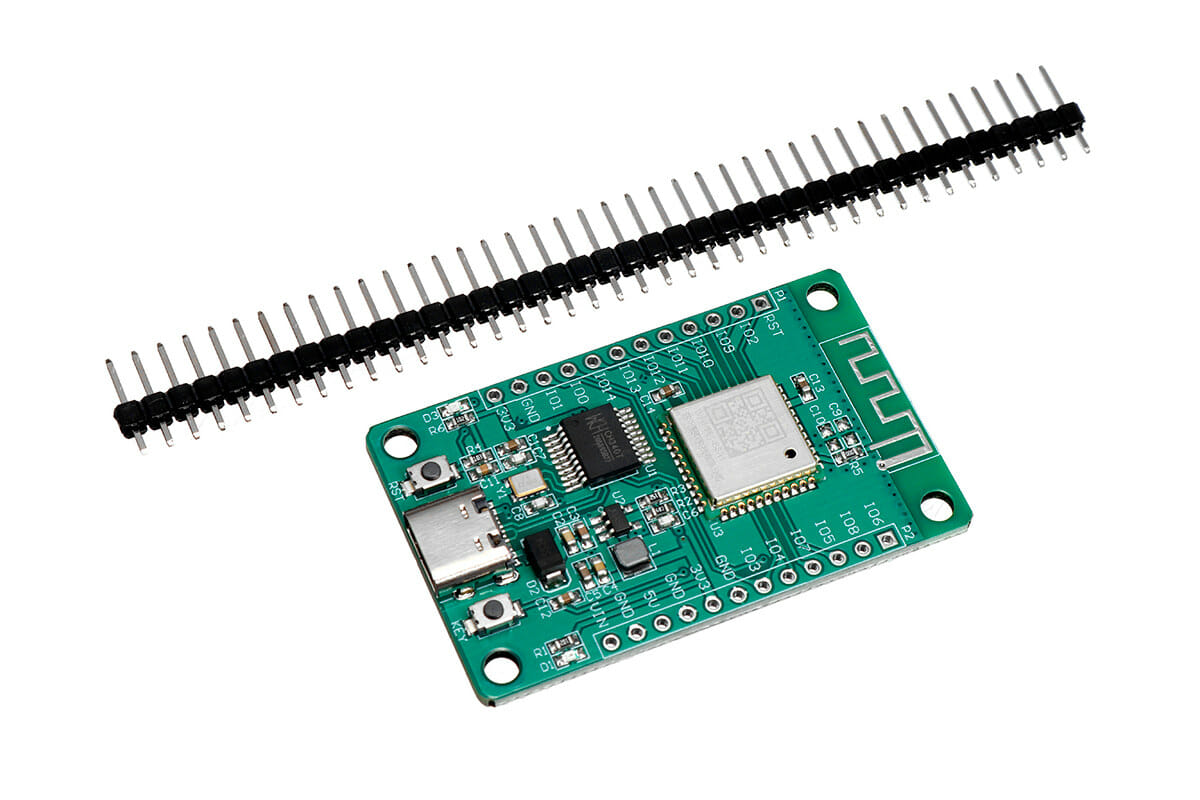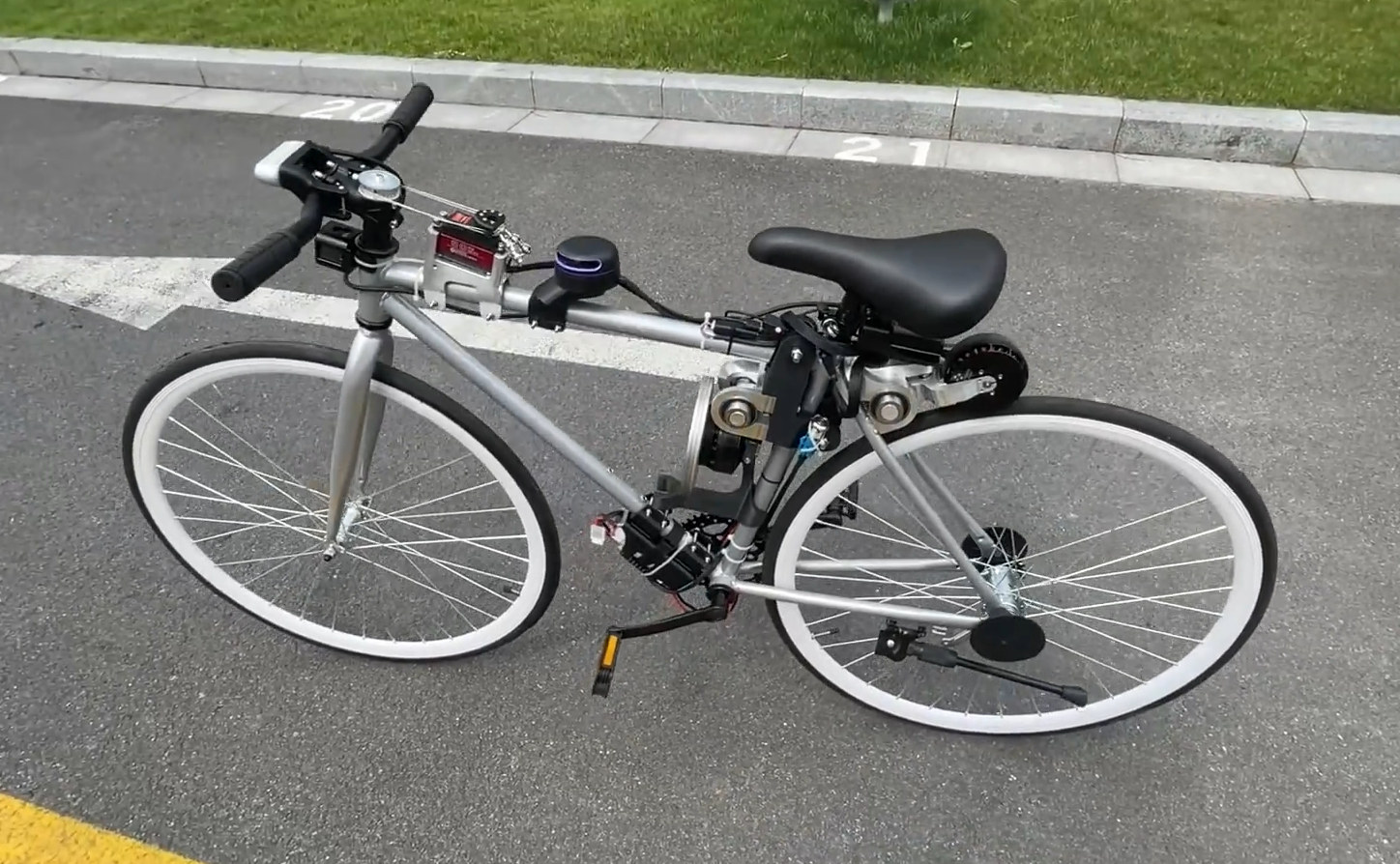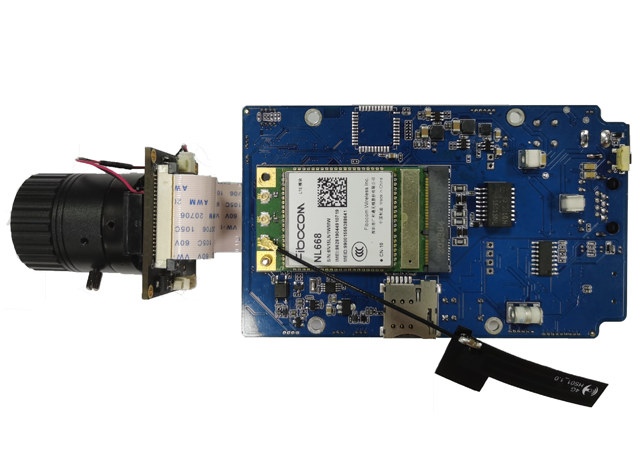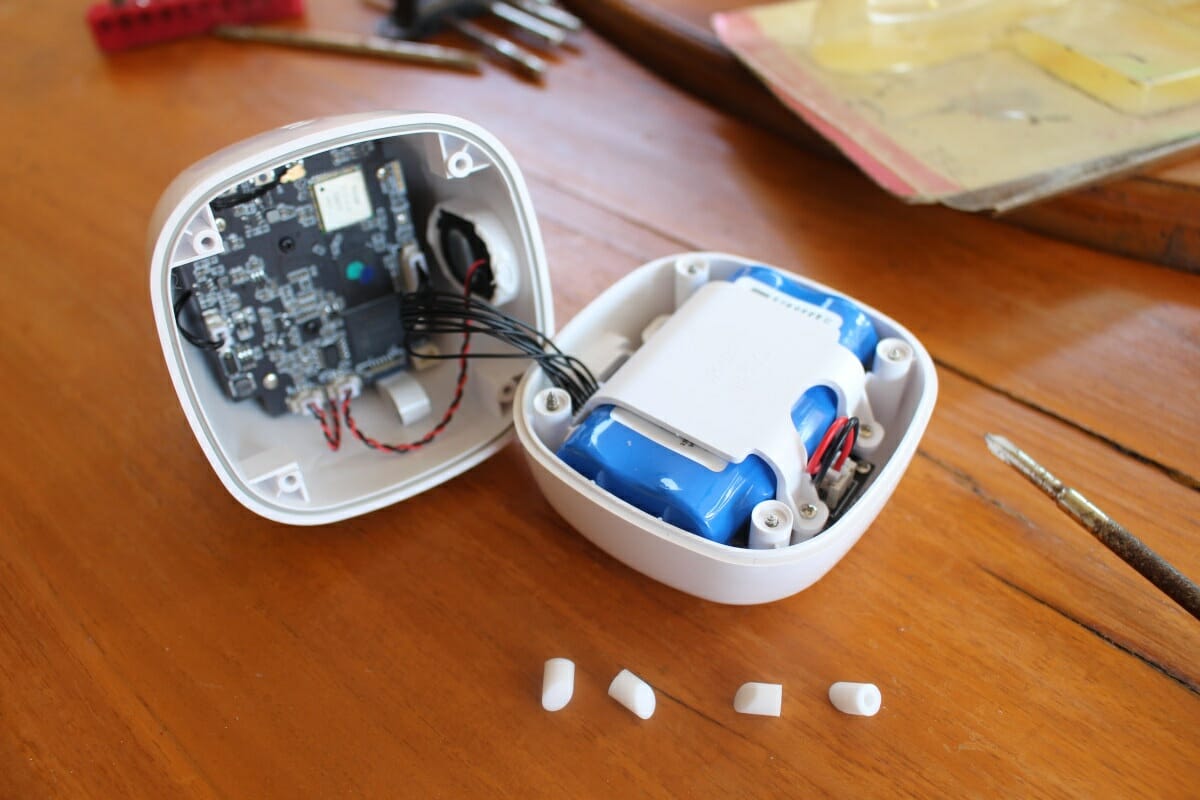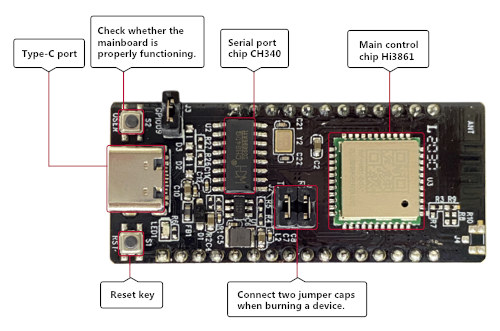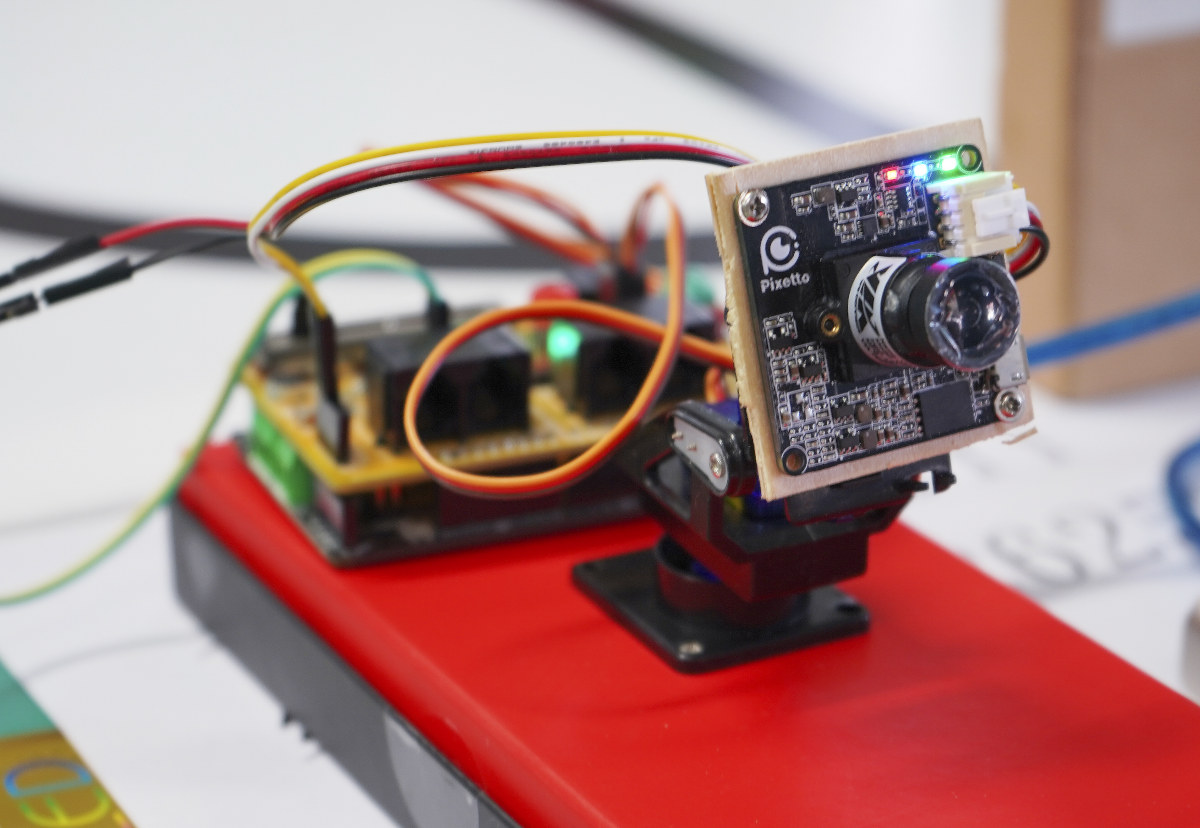Last year, we noted the Hisilicon Hi3861 based HiSpark WiFi IoT development board with supports LiteOS and HarmonyOS that was available in China for just under $10, or as part of a devkit with baseboard and modules for around $60. Although not very practical, buying from Taobao was possible, but there’s now what appears to be a new revision of the Hi3861V100 based HarmonyOS development board in a wider form factor on Banggood for $10.99. Hi3861 development board specifications: MCU – Hisilicon Hi3861V100 32-bit RISC-V microcontroller @ up to 160 MHz with 352 KB SRAM and 288 KB ROM, 2 MB flash memory, and WiFI 4 connectivity; QFN-32 5x5mm package WiFi 802.11b/g/n standard up to 72.2 Mbps @ HT20 2.4 GHz frequency band (ch1-ch14). Station (STA) and access point (AP) modes with up to 6 clients for the latter WiFi mesh with up to 256 nodes Security – WPA, WPA2 […]
XUAN-Bike self-balancing, self-riding bicycle relies on flywheel, 22 TOPS Huawei Ascend A310 AI processor
After Huawei engineer Peng Zhihui Jun fell off this bicycle, he decided he should create a self-balancing, self-riding bicycle, and ultimately this gave birth to the XUAN-Bike, with XUAN standing for eXtremely, Unnatural Auto-Navigation, and also happening to be an old Chinese name for cars. The bicycle relies on a flywheel and a control board with ESP32 and MPU6050 IMU for stabilization connected over a CAN bus to the motors, as well as Atlas 200 DK AI Developer Kit equipped with the 22 TOPS Huawei Ascend A310 AI processor consuming under 8W connected to a 3D depth camera and motor for self-riding. It’s not the first time we see this type of bicycle or even motorcycle, but the XUAN-Bike design is also fairly well-documented with the hardware design (electronics + 3D Fusion360 CAD files) and some documentation in Chinese uploaded to Github. The software part has not been released so […]
HarmonyOS launched on Huawei MatePad tablets, Watch 3 smartwatches
Huawei plans for an Android alternative called HongMeng (鸿蒙) OS were leaked in 2019 following tensions with the US government that prevented them from working with American and other companies around the world. The operating system was later called HarmonyOS for the overseas markets, and Huawei released HarmonyOS 2.0 beta in September of last year, where we learned it was heavily inspired by Android, replacing Google GMS with Huawei’s own HMS, but using the same development tools. We also got a roadmap at the time with the company planning to launch HarmonyOS devices in 2021. Developers first got the HiSpark WiFi IoT RISC-V development board to play with the new OS in October 2020, but now the company has finally announced HarmonyOS consumer devices with three Huawei MatePad tablets, and two Huawei 3 watches. Huawei MatePad HamornyOS tablets Three models have been introduced with a mix of Kirin and Snapdragon […]
Huawei Qingyun L410 Linux laptop is powered by Kirin 990 Arm processor
While it’s already possible to purchase an Arm Linux laptop like PineBook Pro, the Rockchip RK3399 processor, and 4GB RAM may be limiting to some, especially when wanting to multitask. But most likely out of necessity, Huawei has unveiled a more powerful Arm Linux laptop with Huawei Qingyun L410 powered by a 7nm Kirin 990 octa-core Cortex A76/A55 processor, coupled with 8GB RAM, up to 512GB of storage, and a 14-inch display. Huawei Qingyun L410(L410 KLVU-WDU0) preliminary specifications: SoC – Hisilicon Kirin 990 octa-core processor with 2x Cortex-A76 @ 2.86GHz, 2x Cortex-A76 @ 2.09GHz, 4x Cortex A55 @ 1.86GHz, Arm Mali-G76MP16 @ 700 MHz, DaVinci NPU System Memory – 8GB LPDDR4-4266 Storage – Up to 512 UFS of storage (SSD or UFS 3.0 TBC) Display – 14-inch 2K display with a 3:2 aspect ratio Camera – “hidden camera” Video – 4K 60fps video support Misc – Fingerprint sensor Dimensions – […]
SigmaStar SSC33x Camera SoCs are pin-to-pin compatible with Hisilicon Hi3516/Hi3518 processors
We’ve been writing a fair amount of posts about SigmaStar SSD201/SSD202D processors for smart displays in recent times. But the company also has various camera SoC’s with SSC333, SSC335, SSC336, SSC337, SS338, and SSC339 parts. Those processors feature one or two Cortex-A7 core, embedded RAM, as well as an optional AI accelerator called DLA (Deep Learning Accelerator). The chips manufactured using a 28nm or 22nm process, with the latter being used for parts with the AI accelerator. Most of the Sigmastar SCC33x processors also happen to be pin-to-pin compatible with HiSilicon Hi3516 or Hi3518 SoC that are found in a wide range of IP cameras. Let’s take SSC336D/SSC336Q processor as an example since it comes with the AI accelerator and we have a datasheet courtesy of linux-chenxing.com. SigmaStar SSC336D/SSC336Q camera SoC key features & specifications: CPU – Dual-core Arm Cortex-A7 processor @ 1 GHz with Neon and FPU Embedded Memory […]
Vacos Cam AI Security Camera Review – Part 1: Specifications, Unboxing and Teardown
As we’ve seen in our Reolink RLC-810A review, AI security cameras greatly reduce the number of false alerts generated by motion sensors, and the Reolink 4K security camera we tested was capable of people and vehicle detection. The Reolink model does not support WiFi, so I had to run a long Ethernet cable, plus a power extension to connect a 12V power adapter since I don’t own a PoE injector. But I’ve been given the opportunity to review another AI security camera, namely Vacos Cam, that also supports human detection, but relies on WiFi connectivity and can be powered by a solar panel removing the need for potentially long cable. As a bonus, it comes with eMMC for storage, so there’s no need for a MicroSD card. In the first part of the review, I’ll list the specifications, unbox the power panel and camera, and tear down Vacos Cam to […]
Hi3861 based HiSpark WiFi IoT development board supports LiteOS and HarmonyOS
HiHope HiSpark WiFi IoT development board features Hisilicon Hi3861 microcontroller with 2.4 GHz 802.11b/g/n WiFi 4 and supports Huawei LiteOS as well as HarmonyOS. Equipped with 2MB flash and 384KB SRAM, the board targets smart home applications, and ships with a baseboard to help with development. HiSpark board specifications: MCU – Hisilicon Hi3861 32-bit microcontroller @ up to 160 MHz with 352 KB SRAM and 288 KB ROM, 2 MB flash memory, and WiFI 4 connectivity; QFN-32 5x5mm package WiFi 802.11b/g/n standard up to 72 Mbps @ HT20 2.4 GHz frequency band (ch1-ch14). Station (STA) and access point (AP) modes with up to 6 clients for the latter WiFi mesh with up to 256 nodes Security – WPA, WPA2 personal, and WPS 2.0 PCB antenna USB – 1x USB Type-C port for power and programming via CH340 chip Expansion – 2x headers with up to 2x SPI, 2x I2C, 3x […]
VIA Pixetto Hi3518E V300 HD Camera Board Targets Artificial Intelligence and Machine Learning Education
VIA Technologies has launched the VIA Pixetto vision sensor aims to teach artificial intelligence (AI) and machine learning (ML) to students aged twelve and above. The Linux board features an Hisilicon Hi3518E V300 Cortex-A7 HD camera SoC combined with 64MB RAM, 128MB SPI flash, a MicroSD slot, as well as GalaxyCore GC2053 2M CMOS sensor offering 1920 x 1080 resolution and a 130° field of view. VIA Pixetto hardware specifications: SoC – Hisilicon Hi3518E V300 Cortex-A7 HD camera SoC @ 900 MHz with H.264, H.265, MJPEG/JPEG encoder System Memory – 64MB DDR, MicroSD card slot Storage – 128MB SPI flash Camera – GalaxyCore GC2053 2M CMOS sensor with 1920 x 1080 resolution, 130° FoV Audio – Microphone USB – 1x Micro USB 2.0 port Connectivity – WiFi 4 via Hisilicon Hi1131 low-power Wi-Fi chip and ceramic antenna Expansion – Grove connector Misc – 3x LEDs (Power, OS boot, active status), […]


